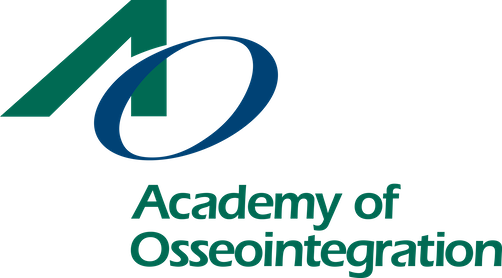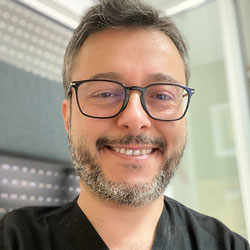-
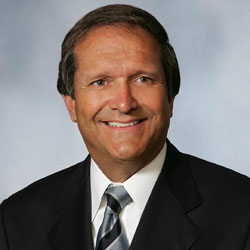 Roger Wise, DDS, MS The orthodontic profession has only recently focused its attention towards patient driven diagnosis and treatment planning. It is difficult to imagine practicing dentistry today without the utilization of dental implants. Smile esthetics can be very challenging or even compromised when implants are involved. In problem-oriented implant treatment planning the orthodontist may help establish a diagnosis that identifies possible improvement or even correction of hard and soft tissue. This lecture will also demonstrate how to establish occlusal and/or spacial relationships prior to implant placement. Recorded - March 31, 2021
Roger Wise, DDS, MS The orthodontic profession has only recently focused its attention towards patient driven diagnosis and treatment planning. It is difficult to imagine practicing dentistry today without the utilization of dental implants. Smile esthetics can be very challenging or even compromised when implants are involved. In problem-oriented implant treatment planning the orthodontist may help establish a diagnosis that identifies possible improvement or even correction of hard and soft tissue. This lecture will also demonstrate how to establish occlusal and/or spacial relationships prior to implant placement. Recorded - March 31, 2021 -
 Andrea Ravidà, DDS During the last decade, short implants (≤6mm) have been shown to be a reliable and effective solution for patients with posterior bone atrophy. This presentation will explore in detail the scientific literature on short implants, providing evidence-based guidelines for clinicians concerning their use. Furthermore, the benefits and disadvantages of short implants in comparison to bone regenerative therapies in conjunction with standard length implant placement will be discussed. Recorded - October 20, 2021
Andrea Ravidà, DDS During the last decade, short implants (≤6mm) have been shown to be a reliable and effective solution for patients with posterior bone atrophy. This presentation will explore in detail the scientific literature on short implants, providing evidence-based guidelines for clinicians concerning their use. Furthermore, the benefits and disadvantages of short implants in comparison to bone regenerative therapies in conjunction with standard length implant placement will be discussed. Recorded - October 20, 2021 -
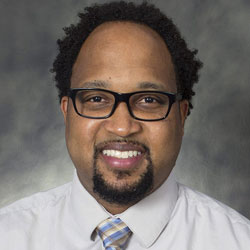 Darnell Kaigler, DDS, MS, PhD Current treatment modalities to restore oral tissues and teeth provide functional and structural restoration of the compromised or lost tissues; yet, many of these approaches do not meet the need for more biologic and physiologic treatment outcomes. The emergence of tissue engineering and regenerative medicine over the past 25 years has been a gateway to new paradigms of treatment in dentistry, particularly for periodontal, peri-implant, and alveolar bone regeneration. Historically, the use of different biomaterials and grafting agents has established a strong platform for the development of therapeutic concepts toward achieving “true“ tissue regeneration. More recently, the use of biologic agents and the advent of cell therapies has enabled an even greater capacity to achieve regeneration in more complex and compromised clinical scenarios. This course will provide an overview of the evolution of stem cell therapeutic approaches in dentistry and highlight current applications for periodontal, peri-implant, and alveolar bone regeneration using stem cells. Key regenerative principles will be discussed and clinical cases will be presented demonstrating how these strategies can be implemented in clinical practice. Recorded - May 25, 2021
Darnell Kaigler, DDS, MS, PhD Current treatment modalities to restore oral tissues and teeth provide functional and structural restoration of the compromised or lost tissues; yet, many of these approaches do not meet the need for more biologic and physiologic treatment outcomes. The emergence of tissue engineering and regenerative medicine over the past 25 years has been a gateway to new paradigms of treatment in dentistry, particularly for periodontal, peri-implant, and alveolar bone regeneration. Historically, the use of different biomaterials and grafting agents has established a strong platform for the development of therapeutic concepts toward achieving “true“ tissue regeneration. More recently, the use of biologic agents and the advent of cell therapies has enabled an even greater capacity to achieve regeneration in more complex and compromised clinical scenarios. This course will provide an overview of the evolution of stem cell therapeutic approaches in dentistry and highlight current applications for periodontal, peri-implant, and alveolar bone regeneration using stem cells. Key regenerative principles will be discussed and clinical cases will be presented demonstrating how these strategies can be implemented in clinical practice. Recorded - May 25, 2021 -
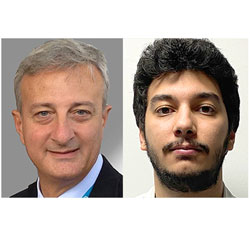 Giacomo Oteri, DDS, MD and Matteo Peditto, DDS, PhD, MSc More and more frequently, the oral surgeon uses analogic and digital diagnostic tools and workflows to perform oral and implant surgery procedures Does the use of these technologies always improve the precision of interventions, reducing morbidity and invasiveness? The current advantages and limitations of analogic and / or digital pathways in various clinical applications will be shown. Recorded - October 11, 2022
Giacomo Oteri, DDS, MD and Matteo Peditto, DDS, PhD, MSc More and more frequently, the oral surgeon uses analogic and digital diagnostic tools and workflows to perform oral and implant surgery procedures Does the use of these technologies always improve the precision of interventions, reducing morbidity and invasiveness? The current advantages and limitations of analogic and / or digital pathways in various clinical applications will be shown. Recorded - October 11, 2022 -
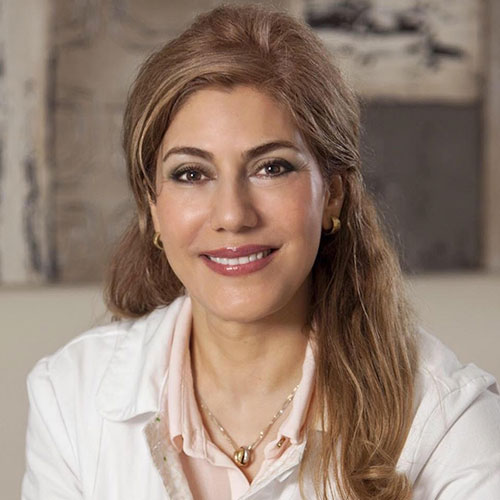 Roya Zandparsa, DDS, MSc, DMD AI technology has been used in many aspects of human society, including medicine, and it is also being used more and more widely in dentistry. The applications extend from the research and development of new dental materials to diagnostic tools(e.g., to detect caries, periapical lesions, and periodontal disease), to treatment planning and oral health care delivery, to the post-treatment monitoring and follow-ups. In this presentation the basic concepts and principles of AI, the new advancements, new approaches, and applications of AI along with other digital technologies in dentistry will be discussed. Recorded March 15, 2022
Roya Zandparsa, DDS, MSc, DMD AI technology has been used in many aspects of human society, including medicine, and it is also being used more and more widely in dentistry. The applications extend from the research and development of new dental materials to diagnostic tools(e.g., to detect caries, periapical lesions, and periodontal disease), to treatment planning and oral health care delivery, to the post-treatment monitoring and follow-ups. In this presentation the basic concepts and principles of AI, the new advancements, new approaches, and applications of AI along with other digital technologies in dentistry will be discussed. Recorded March 15, 2022 -
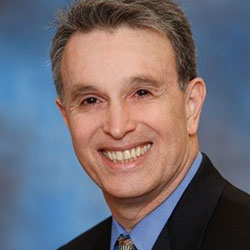 Robert Lemke, DDS, MD This presentation will review the biology of pain in the human body, history of pain management and available pain management options along with how each one affects the human body differently. I will also discuss the pharmacology of opioids and warning signs in patients that may be seeking opioids. The effects of an opioid addiction will also be discussed. Recorded - April 27, 2021
Robert Lemke, DDS, MD This presentation will review the biology of pain in the human body, history of pain management and available pain management options along with how each one affects the human body differently. I will also discuss the pharmacology of opioids and warning signs in patients that may be seeking opioids. The effects of an opioid addiction will also be discussed. Recorded - April 27, 2021 -
 Edward Shih-Chang Tseng, DDS, MS This lecture will introduce the biologic classification of soft tissue graft briefly and then highlight the clinical applications of connective tissue graft to enhance esthetics, increase keratinized tissue and prevent /correct the mucosal recession around the dental implant. The principles, procedures and technique notes of applying the connective tissue graft in implant dentistry will be addressed via not only clinical slides but also surgical clips and animations. Recorded - November 18, 2021
Edward Shih-Chang Tseng, DDS, MS This lecture will introduce the biologic classification of soft tissue graft briefly and then highlight the clinical applications of connective tissue graft to enhance esthetics, increase keratinized tissue and prevent /correct the mucosal recession around the dental implant. The principles, procedures and technique notes of applying the connective tissue graft in implant dentistry will be addressed via not only clinical slides but also surgical clips and animations. Recorded - November 18, 2021 -
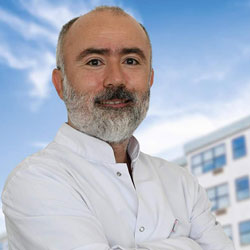 Guney Yilmaz, DDS, PhD In this presentation, detailed information regarding the surgical use of preferred hard and soft tissue lasers for periodontal treatments and implantology is going to be shared. In order to make effective use of lasers in dentistry, the basic physical principles and technical properties of lasers are going to be highlighted. Subsequently, the basics of using hard and soft tissue lasers in periodontal surgery are going to explained as well as how clinicians can benefit from these devices in implantology will be illustrated using cases. Recorded - October 20, 2022
Guney Yilmaz, DDS, PhD In this presentation, detailed information regarding the surgical use of preferred hard and soft tissue lasers for periodontal treatments and implantology is going to be shared. In order to make effective use of lasers in dentistry, the basic physical principles and technical properties of lasers are going to be highlighted. Subsequently, the basics of using hard and soft tissue lasers in periodontal surgery are going to explained as well as how clinicians can benefit from these devices in implantology will be illustrated using cases. Recorded - October 20, 2022 -
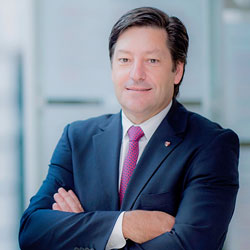 German Gallucci, DMD, PhD During this lecture, clinical considerations and indications for dental implants will be analyzed in the context of their direct application to esthetic implant-prosthetic rehabilitations. Risk assessment, treatment planning, surgical protocols and esthetic/prosthodontic rehabilitations will be discussed in detail according to different clinical situations. Recommended planning steps and treatment procedures will be presented through scientific evidence. Modern Implant-prosthetic restorations using different implant designs and digital technology call for a harmonious esthetic integration with the pre-existing environment. A scalloped gingival line with distinct papillae and free of any abrupt vertical differences in clinical crown length between anterior implants, is paramount. In this context, biologic considerations affecting normal peri-implant soft tissue integration will be discussed as a major esthetic parameter. Recorded - July 17, 2021
German Gallucci, DMD, PhD During this lecture, clinical considerations and indications for dental implants will be analyzed in the context of their direct application to esthetic implant-prosthetic rehabilitations. Risk assessment, treatment planning, surgical protocols and esthetic/prosthodontic rehabilitations will be discussed in detail according to different clinical situations. Recommended planning steps and treatment procedures will be presented through scientific evidence. Modern Implant-prosthetic restorations using different implant designs and digital technology call for a harmonious esthetic integration with the pre-existing environment. A scalloped gingival line with distinct papillae and free of any abrupt vertical differences in clinical crown length between anterior implants, is paramount. In this context, biologic considerations affecting normal peri-implant soft tissue integration will be discussed as a major esthetic parameter. Recorded - July 17, 2021 -
 Robert Lemke, DDS, MD In implant dentistry, details count…they can add up to success, or to failure. Experienced surgeons rely on a system to ensure that all details are addressed in a methodical manner, so that none are overlooked. This course will help you to create a system that includes site analysis, preoperative medications, nuances in surgical procedures, and more for predictable success in implant surgery. Recorded - December 11, 2021
Robert Lemke, DDS, MD In implant dentistry, details count…they can add up to success, or to failure. Experienced surgeons rely on a system to ensure that all details are addressed in a methodical manner, so that none are overlooked. This course will help you to create a system that includes site analysis, preoperative medications, nuances in surgical procedures, and more for predictable success in implant surgery. Recorded - December 11, 2021 -
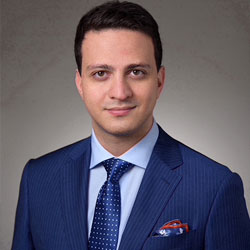 Shayan Barootchi, DMD Implant therapy has become the standard treatment for replacement of missing teeth. Nonetheless, with its popularity, there has been a rise in aesthetic and biological complications and the emergence of peri-implant diseases. This presentation will focus on the components of the peri-implant phenotype, particularly the implant soft tissue phenotype, and strategies for its augmentation and therefore, modification. The importance of keratinized mucosa on peri-implant health will be reviewed together with the various approaches to regenerate keratinized and attached peri-implant mucosa. Similarly, the key role of tissue thickness for stability and esthetics, as well as surgical approaches and biomaterials for mucosal thickness augmentation, will be discussed. This presentation will also touch upon novel methodologies for assessment and quantification of implant health and disease. Recorded - October 13, 2022
Shayan Barootchi, DMD Implant therapy has become the standard treatment for replacement of missing teeth. Nonetheless, with its popularity, there has been a rise in aesthetic and biological complications and the emergence of peri-implant diseases. This presentation will focus on the components of the peri-implant phenotype, particularly the implant soft tissue phenotype, and strategies for its augmentation and therefore, modification. The importance of keratinized mucosa on peri-implant health will be reviewed together with the various approaches to regenerate keratinized and attached peri-implant mucosa. Similarly, the key role of tissue thickness for stability and esthetics, as well as surgical approaches and biomaterials for mucosal thickness augmentation, will be discussed. This presentation will also touch upon novel methodologies for assessment and quantification of implant health and disease. Recorded - October 13, 2022 -
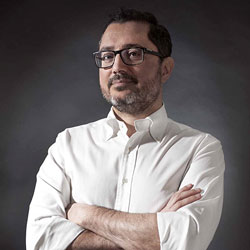 Luigi Canullo, DDS, PhD Recently published Literature showed that interactions between soft tissues and a foreign body, like an abutment, was mediated by the abutment material features and the tissue characteristics, so far defined only using the biotype. However, once analyzed in detail the soft tissue adaptation to the abutment, different variables were demonstrated to simultaneously interact in this scenario. In fact, the soft tissue expression appeared to depend not only on the histologic characteristics but mostly on the individual inflammatory and regenerative patterns (epigenetics). At the same time, the prosthetic work flow was also demonstrated to influence the healing displays, as well as the abutment surface features, which could be didactically summarized using a macro-, micro- and nano- scale. In fact, while a narrower macro morphology was clearly associated to a better bone level maintenance and better esthetic outcomes, moderately rough microtopography was shown to enhance the connective/metallic adhesion. An even more magnified capture of the situation revealed that more hydrophilic and more decontaminated surfaces presented a stronger tissue/metallic adhesion, correlated to a consequent positive impact on bone level changes. Finally, last but not least parameter, in a microbiological contaminated environment like the oral cavity, microbiological colonization of the abutment surface was shown to influence the soft tissue/foreign body interaction. Recorded - April 13, 2021
Luigi Canullo, DDS, PhD Recently published Literature showed that interactions between soft tissues and a foreign body, like an abutment, was mediated by the abutment material features and the tissue characteristics, so far defined only using the biotype. However, once analyzed in detail the soft tissue adaptation to the abutment, different variables were demonstrated to simultaneously interact in this scenario. In fact, the soft tissue expression appeared to depend not only on the histologic characteristics but mostly on the individual inflammatory and regenerative patterns (epigenetics). At the same time, the prosthetic work flow was also demonstrated to influence the healing displays, as well as the abutment surface features, which could be didactically summarized using a macro-, micro- and nano- scale. In fact, while a narrower macro morphology was clearly associated to a better bone level maintenance and better esthetic outcomes, moderately rough microtopography was shown to enhance the connective/metallic adhesion. An even more magnified capture of the situation revealed that more hydrophilic and more decontaminated surfaces presented a stronger tissue/metallic adhesion, correlated to a consequent positive impact on bone level changes. Finally, last but not least parameter, in a microbiological contaminated environment like the oral cavity, microbiological colonization of the abutment surface was shown to influence the soft tissue/foreign body interaction. Recorded - April 13, 2021 -
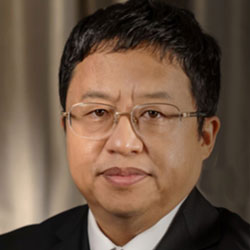 Haiyang Yu, PhD, DDS In implant surgery, a good linear guiding accuracy can be realized by static template, but it is still less than 1mm. Such accuracy, not as high as expected, can be attributed to the lack of physical measurement during the surgery. Physical measurement is an effective way to manage the implant error within the acceptable limits. Although periodontal probe is wildly used, it is not an appropriate measuring tool for implant surgery which requires accuracy less than 1mm. In order to ensure the implant accuracy, it is necessary to measure and check the crown-root ratio and angle of implants as well as the distance between implants and adjacent teeth by special measuring tools with less-than-1mm accuracy at each interoperative step. This presentation will review the evolution of the guiding methods of implant surgery and the accuracy of these methods, and elaborate on the significance and principle of interoperative physical-measurement through clinical cases. Recorded - May 19, 2022
Haiyang Yu, PhD, DDS In implant surgery, a good linear guiding accuracy can be realized by static template, but it is still less than 1mm. Such accuracy, not as high as expected, can be attributed to the lack of physical measurement during the surgery. Physical measurement is an effective way to manage the implant error within the acceptable limits. Although periodontal probe is wildly used, it is not an appropriate measuring tool for implant surgery which requires accuracy less than 1mm. In order to ensure the implant accuracy, it is necessary to measure and check the crown-root ratio and angle of implants as well as the distance between implants and adjacent teeth by special measuring tools with less-than-1mm accuracy at each interoperative step. This presentation will review the evolution of the guiding methods of implant surgery and the accuracy of these methods, and elaborate on the significance and principle of interoperative physical-measurement through clinical cases. Recorded - May 19, 2022 -
 Nermin Tarhan, MS Personalized medicine requires individual risk assessment as an integral part of the diagnostic, therapeutic, and prognostic processes. Despite categoric evaluation of most medical diseases/disorders, it is crucial to evaluate each patient individually. Peri-implantitis is one of the important complications of dental implant treatments and in many cases management of peri-implantitis can be quite challenging for dental professionals. Thus, prevention of peri-implantitis is suggested to be of utmost importance. Upon completion of this presentation, participants should be able to: 1) Describe personalized medicine, and individual risk assessment. 2) Explain the challenge and complexity of successful management of peri-implantitis. 3) Identify the essential elements of risk assessment for prevention of peri-implantitis. Record on November 20th
Nermin Tarhan, MS Personalized medicine requires individual risk assessment as an integral part of the diagnostic, therapeutic, and prognostic processes. Despite categoric evaluation of most medical diseases/disorders, it is crucial to evaluate each patient individually. Peri-implantitis is one of the important complications of dental implant treatments and in many cases management of peri-implantitis can be quite challenging for dental professionals. Thus, prevention of peri-implantitis is suggested to be of utmost importance. Upon completion of this presentation, participants should be able to: 1) Describe personalized medicine, and individual risk assessment. 2) Explain the challenge and complexity of successful management of peri-implantitis. 3) Identify the essential elements of risk assessment for prevention of peri-implantitis. Record on November 20th -
 Derrick Pylant, DDS In this presentation we will discuss the indications for alveolar ridge preservation and immediate implant placement. Bio-material selection, surgical technique, and timing of implant placement will be highlighted with a clinical emphasis on practical and predictable techniques. Recorded - August 14, 2021
Derrick Pylant, DDS In this presentation we will discuss the indications for alveolar ridge preservation and immediate implant placement. Bio-material selection, surgical technique, and timing of implant placement will be highlighted with a clinical emphasis on practical and predictable techniques. Recorded - August 14, 2021 -
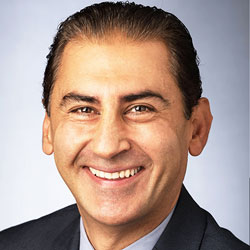 Ilser Turkyilmaz, DDS, PhD Implant-supported fixed dental prostheses improve the quality of life of edentulous patients experiencing functional and esthetic problems associated with complete dentures. CAD/CAM technology has recently revolutionized the field of implant dentistry. CAD/CAM surgical guides have greatly improved the predictability of implant surgery and the CAD/CAM fabrication of frameworks has resulted in elimination of distortion, better fit, fewer fabrication steps, and faster turn-around. All of these advancements offer improved experience for the patient, decreased treatment time, and greater accessibility. Basic clinical and laboratory procedures for restoring edentulous arches with CAD/CAM surgical guides and implant-supported fixed prostheses will be discussed. Recorded - January 11, 2021
Ilser Turkyilmaz, DDS, PhD Implant-supported fixed dental prostheses improve the quality of life of edentulous patients experiencing functional and esthetic problems associated with complete dentures. CAD/CAM technology has recently revolutionized the field of implant dentistry. CAD/CAM surgical guides have greatly improved the predictability of implant surgery and the CAD/CAM fabrication of frameworks has resulted in elimination of distortion, better fit, fewer fabrication steps, and faster turn-around. All of these advancements offer improved experience for the patient, decreased treatment time, and greater accessibility. Basic clinical and laboratory procedures for restoring edentulous arches with CAD/CAM surgical guides and implant-supported fixed prostheses will be discussed. Recorded - January 11, 2021 -
 Despoina Bompolaki, DDS, MS Dental implants have become a widely accepted, sought-after treatment option for replacing missing teeth. Favorable treatment outcomes depend on proper planning and execution, from both a restorative and a surgical perspective. This lecture will go well beyond the basics of restoring dental implants: achieving predictable esthetic outcomes when restoring anterior implants; capturing accurate impressions in multiple implant cases; identifying proper componentry for existing implants; recognizing and addressing common prosthetic complications; and most of all, supporting clinical decisions with scientific evidence. Recorded - November 20, 2021
Despoina Bompolaki, DDS, MS Dental implants have become a widely accepted, sought-after treatment option for replacing missing teeth. Favorable treatment outcomes depend on proper planning and execution, from both a restorative and a surgical perspective. This lecture will go well beyond the basics of restoring dental implants: achieving predictable esthetic outcomes when restoring anterior implants; capturing accurate impressions in multiple implant cases; identifying proper componentry for existing implants; recognizing and addressing common prosthetic complications; and most of all, supporting clinical decisions with scientific evidence. Recorded - November 20, 2021 -
 Dan Holtzclaw, DDS, MS Although they have been in use for over 50 years, pterygoid dental implants are one of the least understood styles of dental implant treatment. This may be due to the fact that pterygoid implants are widely considered to be one of the most difficult fixtures to place in all of implant dentistry. In this webinar, Dr. Dan Holtzclaw details his experience utilizing pterygoid implant in hundreds of full arch immediate load cases. Recorded - September 1, 2021
Dan Holtzclaw, DDS, MS Although they have been in use for over 50 years, pterygoid dental implants are one of the least understood styles of dental implant treatment. This may be due to the fact that pterygoid implants are widely considered to be one of the most difficult fixtures to place in all of implant dentistry. In this webinar, Dr. Dan Holtzclaw details his experience utilizing pterygoid implant in hundreds of full arch immediate load cases. Recorded - September 1, 2021 -
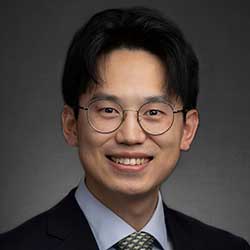 Junying Li, DDS, MS, PhD Prosthetic design is a crucial factor influencing the long-term success of implant treatments. This lecture will explore essential prosthetic considerations, with a focus on trans-mucosal contour design and its relationship to surgical techniques, abutment selection, and the restoration process. A clinical decision tree and cases utilizing a fully digital approach will be demonstrated. Upon completion of this presentation, participants should be able to: 1) Identify the types of single implant abutment. 2) Design an implant crown contour that is both biologically sound and aesthetically correct. 3) Describe the process of immediate single implant loading with digitally pre-fabricated implant crown. Recorded September 18th
Junying Li, DDS, MS, PhD Prosthetic design is a crucial factor influencing the long-term success of implant treatments. This lecture will explore essential prosthetic considerations, with a focus on trans-mucosal contour design and its relationship to surgical techniques, abutment selection, and the restoration process. A clinical decision tree and cases utilizing a fully digital approach will be demonstrated. Upon completion of this presentation, participants should be able to: 1) Identify the types of single implant abutment. 2) Design an implant crown contour that is both biologically sound and aesthetically correct. 3) Describe the process of immediate single implant loading with digitally pre-fabricated implant crown. Recorded September 18th -
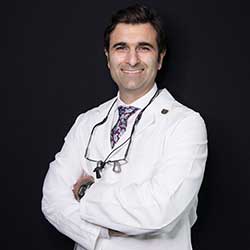 Sam Shamardi, DMD This course will provide an overview of several essential factors that a dental professional needs to succeed as an individual and practice owner from graduation day to retirement. Upon completion of this presentation, participants should be able to: 1) Identify best options for student loan repayment. 2) Explain why saving from day one is essential. 3) Describe important lifestyle and work habits that need to be considered for long term success. Recorded – March 26, 2024
Sam Shamardi, DMD This course will provide an overview of several essential factors that a dental professional needs to succeed as an individual and practice owner from graduation day to retirement. Upon completion of this presentation, participants should be able to: 1) Identify best options for student loan repayment. 2) Explain why saving from day one is essential. 3) Describe important lifestyle and work habits that need to be considered for long term success. Recorded – March 26, 2024 -
 Prof. Dr. Tobias Fretwurst What if our therapies were as precise as Netflix recommendations? What sounds like the future is becoming increasingly commonplace in many areas of medicine. In this talk, Dr. Fretwurst will explain in simple terms what is meant by precision medicine and discuss its immense potential. Then he will showcase how his work group is already making use of this so-called personalized medicine in the field of implant dentistry. How can precision medicine be applied, for example, in grafting surgery? Can it revolutionize peri-implantitis diagnosis? What are the current limitations? Recorded - July 12, 2023
Prof. Dr. Tobias Fretwurst What if our therapies were as precise as Netflix recommendations? What sounds like the future is becoming increasingly commonplace in many areas of medicine. In this talk, Dr. Fretwurst will explain in simple terms what is meant by precision medicine and discuss its immense potential. Then he will showcase how his work group is already making use of this so-called personalized medicine in the field of implant dentistry. How can precision medicine be applied, for example, in grafting surgery? Can it revolutionize peri-implantitis diagnosis? What are the current limitations? Recorded - July 12, 2023 -
 Setareh Lavasani, DDS, MS This presentation is an interactive and comprehensive update in 2D and 3D CBCT radiographic interpretation. It focuses on the importance of developing an analytical strategy to systematically review different types of dental images. The importance of “pattern recognition” to differentiate between different jaw pathologies; inflammatory, benign, malignant and fibrou-osseous lesions with clinical cases will be discussed. An overview of possible differential diagnosis for paranasal sinuses opacifications and head and neck soft tissue calcifications are reviewed. Recorded - August 19, 2021
Setareh Lavasani, DDS, MS This presentation is an interactive and comprehensive update in 2D and 3D CBCT radiographic interpretation. It focuses on the importance of developing an analytical strategy to systematically review different types of dental images. The importance of “pattern recognition” to differentiate between different jaw pathologies; inflammatory, benign, malignant and fibrou-osseous lesions with clinical cases will be discussed. An overview of possible differential diagnosis for paranasal sinuses opacifications and head and neck soft tissue calcifications are reviewed. Recorded - August 19, 2021 -
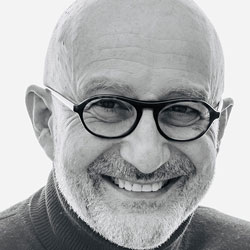 Philippe Khayat, MSD Peri-implantitis is a puzzling and frustrating complication. Sadly, it is becoming more and more frequent. Several senior dental professionals tell us that, for a long time (1985-2005), peri-implantitis was almost absent from their experience. They mention the shift from machined to modified implant surfaces as a possible explanation. In other terms, could moderately rough implant surfaces be a risk factor? The debate is very active and scientific studies do not lead to the same conclusions. We will explore this controversy both from a scientific and clinical perspective and evaluate the need for hybrid implants. Recorded - March 17, 2022
Philippe Khayat, MSD Peri-implantitis is a puzzling and frustrating complication. Sadly, it is becoming more and more frequent. Several senior dental professionals tell us that, for a long time (1985-2005), peri-implantitis was almost absent from their experience. They mention the shift from machined to modified implant surfaces as a possible explanation. In other terms, could moderately rough implant surfaces be a risk factor? The debate is very active and scientific studies do not lead to the same conclusions. We will explore this controversy both from a scientific and clinical perspective and evaluate the need for hybrid implants. Recorded - March 17, 2022 -
 Georgios Kotsakis, DDS, MS Peri-implantitis has been receiving attention following recent studies that showed that it is highly prevalent and difficult to manage. This lecture will provide the latest evidence-based information on peri-implant diseases with emphasis on the role that titanium particle release has in destructive bone inflammation around implants. Strategies for prevention and mitigation will be presented through clinical cases. Upon completion of this presentation, participants should be able to: 1) Identify explicit methods of peri-implant evaluation. 2) Explain the role of titanium particles around implants. 3) Discuss the etiology of peri-implantitis. Recorded on April 10th, 2025
Georgios Kotsakis, DDS, MS Peri-implantitis has been receiving attention following recent studies that showed that it is highly prevalent and difficult to manage. This lecture will provide the latest evidence-based information on peri-implant diseases with emphasis on the role that titanium particle release has in destructive bone inflammation around implants. Strategies for prevention and mitigation will be presented through clinical cases. Upon completion of this presentation, participants should be able to: 1) Identify explicit methods of peri-implant evaluation. 2) Explain the role of titanium particles around implants. 3) Discuss the etiology of peri-implantitis. Recorded on April 10th, 2025 -
 Mario Beretta, DDS, MSc, PhD The goal of modern implant therapy in aesthetic areas is no longer represented just by the successful integration of the implant or tooth restoration. The final result must be a restoration surrounded by a soft and hard tissue environment in harmony with the existing teeth. Gingival health is among the first fundamental esthetic objectives during treatment planning; it is also essential to consider gingival morphology and contour. The ideal gingival architecture has been described as one that consists of knife-edged gingival margins tightly adapted to the teeth, interdental grooves, and cone-shaped inter- dental papilla. Soft tissue grafting procedures are increasingly performed for a number of indications in conjunction with dental implant therapy. The presentation will identify the role of gingival form in esthetic dentistry. A new volume stable collagen matrix will be presented analyzing research data and clinical indications. The surgical protocol in peri-implant soft tissues management and periodontal plastic surgery will be presented. Upon completion of this presentation, participants should be able to: 1) Identify methods of treatment planning for soft tissues management. 2) Describe proper surgical technique in peri-implant soft tissues management. 3) Recognize the best surgical technique for soft tissues harvesting. Recorded on February 18th, 2025
Mario Beretta, DDS, MSc, PhD The goal of modern implant therapy in aesthetic areas is no longer represented just by the successful integration of the implant or tooth restoration. The final result must be a restoration surrounded by a soft and hard tissue environment in harmony with the existing teeth. Gingival health is among the first fundamental esthetic objectives during treatment planning; it is also essential to consider gingival morphology and contour. The ideal gingival architecture has been described as one that consists of knife-edged gingival margins tightly adapted to the teeth, interdental grooves, and cone-shaped inter- dental papilla. Soft tissue grafting procedures are increasingly performed for a number of indications in conjunction with dental implant therapy. The presentation will identify the role of gingival form in esthetic dentistry. A new volume stable collagen matrix will be presented analyzing research data and clinical indications. The surgical protocol in peri-implant soft tissues management and periodontal plastic surgery will be presented. Upon completion of this presentation, participants should be able to: 1) Identify methods of treatment planning for soft tissues management. 2) Describe proper surgical technique in peri-implant soft tissues management. 3) Recognize the best surgical technique for soft tissues harvesting. Recorded on February 18th, 2025 -
 Martina Stefanini, DDS, PhD The recession of the buccal soft tissue margin is a frequent complication of well integrated dental implants. The appearance of metallic structure or even their transparency through the thin buccal soft tissues are common reasons for patient aesthetic complains. Moreover, bad implant installation frequently results in excessive apical dislocation of the buccal soft tissue margin of the implant supported crown. Soft tissue plastic surgical procedures and bilaminar techniques in particular, can be successfully used in combination with a pre and postsurgical prostethic approaches to increase the volume of the interdental soft tissue, to treat buccal gingival recessions and soft tissue dehiscence around dental implants and to provide the new implant supported crown with an esthetic transmucosal emergency profile. Recorded - May 4, 2021
Martina Stefanini, DDS, PhD The recession of the buccal soft tissue margin is a frequent complication of well integrated dental implants. The appearance of metallic structure or even their transparency through the thin buccal soft tissues are common reasons for patient aesthetic complains. Moreover, bad implant installation frequently results in excessive apical dislocation of the buccal soft tissue margin of the implant supported crown. Soft tissue plastic surgical procedures and bilaminar techniques in particular, can be successfully used in combination with a pre and postsurgical prostethic approaches to increase the volume of the interdental soft tissue, to treat buccal gingival recessions and soft tissue dehiscence around dental implants and to provide the new implant supported crown with an esthetic transmucosal emergency profile. Recorded - May 4, 2021 -
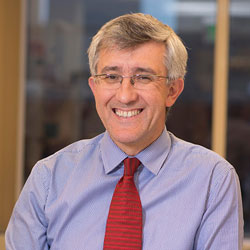 Alpdogan Kantarci, DDS, MS, PhD Peri-implant diseases present a major challenge in dental practice. Treatment options for advanced diseases around dental implants are limited. While there are several similarities between periodontal and peri-implant diseases in their pathogenesis and microbial etiologies, periodontal treatment strategies are not readily applicable to the treatment of peri-implant mucositis and peri-implantitis. One of the key differences is the characteristics of the implant surfaces. In this presentation, emerging preventive and therapeutic approaches will be discussed with an emphasis on geriatric patient population. Recorded - April 21, 2021
Alpdogan Kantarci, DDS, MS, PhD Peri-implant diseases present a major challenge in dental practice. Treatment options for advanced diseases around dental implants are limited. While there are several similarities between periodontal and peri-implant diseases in their pathogenesis and microbial etiologies, periodontal treatment strategies are not readily applicable to the treatment of peri-implant mucositis and peri-implantitis. One of the key differences is the characteristics of the implant surfaces. In this presentation, emerging preventive and therapeutic approaches will be discussed with an emphasis on geriatric patient population. Recorded - April 21, 2021 -
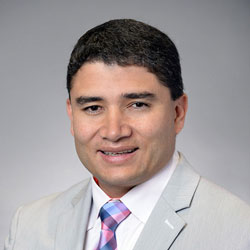 Emilio Arguello, DDS, MS This lecture will focus on the different models for successful management and integration of work-flows between a private practice versus a multi practice models. As well as the understanding of the common goals to maximize earning potential that can be achieved in both models from the practitioner’s point of view. Recorded - November 3, 2021
Emilio Arguello, DDS, MS This lecture will focus on the different models for successful management and integration of work-flows between a private practice versus a multi practice models. As well as the understanding of the common goals to maximize earning potential that can be achieved in both models from the practitioner’s point of view. Recorded - November 3, 2021 -
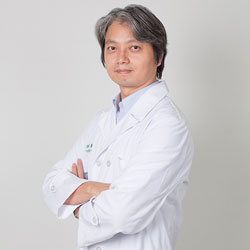 Reis Cheng-Hsiang Hsu, BDS, MS “PASS” principle (Primary wound closure, angiogenesis, space and stability) is the foundation for achieving predictable bone augmentation. This lecture will cover every aspect of this principle so the participants can predictably achieve the bone augmentation that is needed for proper implant placement and implant stability. The lecture will focus on the detail technique of extreme flap advancement, graft mobilization and the skill of flap closure that can be applied even in the vertical bone augmentation. Recorded - July 14, 2022
Reis Cheng-Hsiang Hsu, BDS, MS “PASS” principle (Primary wound closure, angiogenesis, space and stability) is the foundation for achieving predictable bone augmentation. This lecture will cover every aspect of this principle so the participants can predictably achieve the bone augmentation that is needed for proper implant placement and implant stability. The lecture will focus on the detail technique of extreme flap advancement, graft mobilization and the skill of flap closure that can be applied even in the vertical bone augmentation. Recorded - July 14, 2022 -
 Rand Harlow, DDS Maxillary anterior single tooth implant therapy can be challenging on multiple levels. Patients are becoming more demanding with their esthetic expectations. Achieving optimal esthetic outcomes requires an understanding of hard and soft tissue relationships, digital workflows and dental materials. This presentation will explore multiple considerations from diagnosis and treatment planning to treatment execution, in order to achieve acceptable esthetic results for maxillary implant surgery and restoration. Recorded - September 15, 2022
Rand Harlow, DDS Maxillary anterior single tooth implant therapy can be challenging on multiple levels. Patients are becoming more demanding with their esthetic expectations. Achieving optimal esthetic outcomes requires an understanding of hard and soft tissue relationships, digital workflows and dental materials. This presentation will explore multiple considerations from diagnosis and treatment planning to treatment execution, in order to achieve acceptable esthetic results for maxillary implant surgery and restoration. Recorded - September 15, 2022 -
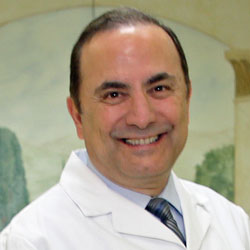 Tony Daher, DDS, MSEd The All-On-X prosthesis is a “popular” option for the treatment of completely edentulous arches with attractive esthetic and functional results. Attractive esthetic and functional results are the results of a well-fabricated presurgical “All-On-Non” Removable Complete Dentures. This concept uses X number of dental implants that are biomechanically positioned for maximum stability of the implant prosthesis. The All-On-X prosthesis concept continued, for many years now, to be a reliable and has a predictable high success rate. The final prosthesis can be made in various grades of laboratory materials from acrylic to metallo-ceramic to Zirconia, always with the same attention to esthetic and functional details. With the use of slides and videos, the presentation will cover many clinical tips needed for a predictable outcome using the All-On-X concept. Recorded - July 14, 2021
Tony Daher, DDS, MSEd The All-On-X prosthesis is a “popular” option for the treatment of completely edentulous arches with attractive esthetic and functional results. Attractive esthetic and functional results are the results of a well-fabricated presurgical “All-On-Non” Removable Complete Dentures. This concept uses X number of dental implants that are biomechanically positioned for maximum stability of the implant prosthesis. The All-On-X prosthesis concept continued, for many years now, to be a reliable and has a predictable high success rate. The final prosthesis can be made in various grades of laboratory materials from acrylic to metallo-ceramic to Zirconia, always with the same attention to esthetic and functional details. With the use of slides and videos, the presentation will cover many clinical tips needed for a predictable outcome using the All-On-X concept. Recorded - July 14, 2021 -
 Shih-Cheng Wen, DDS, MS Dental implant surgery has become a modern science and adjusting the occlusion of the implant restoration is one of the important factors to avoid the complications of dental implants. This presentation will share some literature on the subject of dental implant occlusion. Recorded - October 14, 2021
Shih-Cheng Wen, DDS, MS Dental implant surgery has become a modern science and adjusting the occlusion of the implant restoration is one of the important factors to avoid the complications of dental implants. This presentation will share some literature on the subject of dental implant occlusion. Recorded - October 14, 2021 -
 Michael Miloro, DMD, MD Nerve injuries may occur following dental implant placement but there is no consensus on treatment protocols, and, unfortunately, patient morbidity may be significantly affect quality of life. Proper planning can mitigate the risk of nerve damage, but prompt diagnosis and management is required when nerve injury occurs. Both non-surgical and surgical options exist to treat these injuries, and current technological advances have allowed the use of a processed nerve allograft to repair the nerve with excellent outcomes. Recorded - June 30, 2022
Michael Miloro, DMD, MD Nerve injuries may occur following dental implant placement but there is no consensus on treatment protocols, and, unfortunately, patient morbidity may be significantly affect quality of life. Proper planning can mitigate the risk of nerve damage, but prompt diagnosis and management is required when nerve injury occurs. Both non-surgical and surgical options exist to treat these injuries, and current technological advances have allowed the use of a processed nerve allograft to repair the nerve with excellent outcomes. Recorded - June 30, 2022 -
 Recorded on May 21st, 2025 Description: Utilizing implant rehabilitation in treating patients with terminal dentition has been an optimal treatment modality in modern dental clinics with numerous scientific support. However, the most favorable survival/success outcome and longevity in such treatment remain challenging due to the complexity of which requiring intellectual knowledge and meticulous clinical execution. To begin with, the diagnosis, treatment plan, surgical intervention and fabrication of definitive prosthesis relies on comprehensive and fundamental prosthetic knowledge. Digital dental equipment, software and biomaterials were introduced in dentistry to reduce the pitfalls clinicians frequently encounter in the conventional world. Nevertheless, the integration of modern dental technologies providing top-quality end results of full mouth implant prosthesis will require understanding and in-depth knowledge for all perspectives. Upon completion of this presentation, participants should be able to: 1) Discuss interdisciplinary treatment planning workflow. 2) Navigate full digital implant protocols including the “NaviSmile Workflow”. 3) Explain the current limitations and latest invention of digital application for digital full arch definitive prosthesis. Selene Kuo, DDS, MS Dr. Selene (Hsin Yu) Kuo received her dual degrees in prosthodontics from Kaohsiung Medical University College of Dentistry (Taiwan) and Columbia University College of Dental Medicine (New York, USA). She then continued her academic appointment as clinical assistant professor in New York University College of Dentistry, Columbia University College of Dental Medicine, and Taipei Medical University College of Dentistry. With her profound prosthodontic-implant knowledge and clinical experience, her vision in digital implant dentistry drives her developed the innovative digital workflow “NaviSmile” featuring full mouth implant rehabilitation. “NaviSmile” workflow which incorporates the “era-breaking” dental navigation machine along with dental CAD/CAM equipment and software which precisely brings back patients’ health and smile. Dr. Kuo devotes herself in academia published numerous publications related to digital dentistry and has been lectured nationally/internationally. She also runs her private practice in Taipei City focusing on digital prosthodontics and dental implants. Dr. Kuo has stated she has no relevant financial conflicts to disclose. Relevant literature for further information: Martins J, Rangel J, de Araújo Nobre M, Ferro A, Nunes M, Almeida R, Moura Guedes C. A New Full Digital Workflow for Fixed Prosthetic Rehabilitation of Full-Arch Edentulism Using the All-on-4 Concept. Medicina (Kaunas). 2024 Apr 26;60(5):720. doi: 10.3390/medicina60050720. PMID: 38792903; PMCID: PMC11123051. Shuo Yao, Xiaojuan Yang, Xiaohui Han, Yanning Xue, Lingyun He, Dong Fang, LianPin Yu, Yali Hou, Shengyun Huang Immediate full-arch rehabilitation of edentulous jaws on 4 or 6 implants using a photogrammetry system: A retrospective study up to 2 years of follow-up, Journal of Stomatology, Oral and Maxillofacial Surgery, 2024, 102202, ISSN 2468-7855, https://doi.org/10.1016/j.jormas.2024.102202. (https://www.sciencedirect.com/science/article/pii/S2468785524004919) Serri, M., Ruggiero, G., Serri, M., Mastrosimone, A., Zarone, F., & Sorrentino, R. (2024). A fully-digital rehabilitation for immediately loaded fixed in-terim complete-arch prosthesis: A case report. Journal of Osseointegration, 16(3), 8–14. https://doi.org/10.23805/JO.2024.661
Recorded on May 21st, 2025 Description: Utilizing implant rehabilitation in treating patients with terminal dentition has been an optimal treatment modality in modern dental clinics with numerous scientific support. However, the most favorable survival/success outcome and longevity in such treatment remain challenging due to the complexity of which requiring intellectual knowledge and meticulous clinical execution. To begin with, the diagnosis, treatment plan, surgical intervention and fabrication of definitive prosthesis relies on comprehensive and fundamental prosthetic knowledge. Digital dental equipment, software and biomaterials were introduced in dentistry to reduce the pitfalls clinicians frequently encounter in the conventional world. Nevertheless, the integration of modern dental technologies providing top-quality end results of full mouth implant prosthesis will require understanding and in-depth knowledge for all perspectives. Upon completion of this presentation, participants should be able to: 1) Discuss interdisciplinary treatment planning workflow. 2) Navigate full digital implant protocols including the “NaviSmile Workflow”. 3) Explain the current limitations and latest invention of digital application for digital full arch definitive prosthesis. Selene Kuo, DDS, MS Dr. Selene (Hsin Yu) Kuo received her dual degrees in prosthodontics from Kaohsiung Medical University College of Dentistry (Taiwan) and Columbia University College of Dental Medicine (New York, USA). She then continued her academic appointment as clinical assistant professor in New York University College of Dentistry, Columbia University College of Dental Medicine, and Taipei Medical University College of Dentistry. With her profound prosthodontic-implant knowledge and clinical experience, her vision in digital implant dentistry drives her developed the innovative digital workflow “NaviSmile” featuring full mouth implant rehabilitation. “NaviSmile” workflow which incorporates the “era-breaking” dental navigation machine along with dental CAD/CAM equipment and software which precisely brings back patients’ health and smile. Dr. Kuo devotes herself in academia published numerous publications related to digital dentistry and has been lectured nationally/internationally. She also runs her private practice in Taipei City focusing on digital prosthodontics and dental implants. Dr. Kuo has stated she has no relevant financial conflicts to disclose. Relevant literature for further information: Martins J, Rangel J, de Araújo Nobre M, Ferro A, Nunes M, Almeida R, Moura Guedes C. A New Full Digital Workflow for Fixed Prosthetic Rehabilitation of Full-Arch Edentulism Using the All-on-4 Concept. Medicina (Kaunas). 2024 Apr 26;60(5):720. doi: 10.3390/medicina60050720. PMID: 38792903; PMCID: PMC11123051. Shuo Yao, Xiaojuan Yang, Xiaohui Han, Yanning Xue, Lingyun He, Dong Fang, LianPin Yu, Yali Hou, Shengyun Huang Immediate full-arch rehabilitation of edentulous jaws on 4 or 6 implants using a photogrammetry system: A retrospective study up to 2 years of follow-up, Journal of Stomatology, Oral and Maxillofacial Surgery, 2024, 102202, ISSN 2468-7855, https://doi.org/10.1016/j.jormas.2024.102202. (https://www.sciencedirect.com/science/article/pii/S2468785524004919) Serri, M., Ruggiero, G., Serri, M., Mastrosimone, A., Zarone, F., & Sorrentino, R. (2024). A fully-digital rehabilitation for immediately loaded fixed in-terim complete-arch prosthesis: A case report. Journal of Osseointegration, 16(3), 8–14. https://doi.org/10.23805/JO.2024.661 -
 Irene Marron-Tarrazzi, DMD, MS This webinar will discuss contemporary approaches for minimally invasive and predictable treatment of soft tissue deformities using microsurgical techniques in periodontal and implant surgery. Upon completion of this presentation, participants should be able to: 1) Explore different surgical techniques where periodontal microsurgical principles can be applied. 2) Describe what the adequate amount of soft tissue management and gingival volume required for peri-implant esthetics. 3) Explain the key factors for a successful outcome. Recorded - January 20, 2024
Irene Marron-Tarrazzi, DMD, MS This webinar will discuss contemporary approaches for minimally invasive and predictable treatment of soft tissue deformities using microsurgical techniques in periodontal and implant surgery. Upon completion of this presentation, participants should be able to: 1) Explore different surgical techniques where periodontal microsurgical principles can be applied. 2) Describe what the adequate amount of soft tissue management and gingival volume required for peri-implant esthetics. 3) Explain the key factors for a successful outcome. Recorded - January 20, 2024 -
 Hsun-Liang Chan, DDS, MS Using the surgical microscope as a routine in the clinic for performing periodontal and implant procedures is beneficial! Increased magnification (10 to 25x) and confocal illumination make possible precise incision, soft tissue reflection and management, complete surface detoxification and detailed suturing. These delicate procedures can lead to improved wound stability and early revascularization, which could improve regenerative outcomes and reduce postoperative morbidity, as shown in the literature. This webinar will focus on the principles and rationale of using the surgical microscope for bone regenerative procedures. New insights into soft tissue evaluation for wound opening risk assessment, incision designs and wound closure techniques for predictable bone regeneration will be discussed. Recorded - April 13, 2022
Hsun-Liang Chan, DDS, MS Using the surgical microscope as a routine in the clinic for performing periodontal and implant procedures is beneficial! Increased magnification (10 to 25x) and confocal illumination make possible precise incision, soft tissue reflection and management, complete surface detoxification and detailed suturing. These delicate procedures can lead to improved wound stability and early revascularization, which could improve regenerative outcomes and reduce postoperative morbidity, as shown in the literature. This webinar will focus on the principles and rationale of using the surgical microscope for bone regenerative procedures. New insights into soft tissue evaluation for wound opening risk assessment, incision designs and wound closure techniques for predictable bone regeneration will be discussed. Recorded - April 13, 2022 -
 Oliver Ristow, MD, DDS This course will cover the most recent changes in online marketing and provide the components needed to create a comprehensive marketing strategy for both existing practices or start-ups. You will learn the key items to implement, how they work, and how to measure success. In this session we will discuss changes in Google’s algorithm, website optimization, social media, accessibility, and ways you can optimize your website to generate new patients. Recorded - July 20, 2022
Oliver Ristow, MD, DDS This course will cover the most recent changes in online marketing and provide the components needed to create a comprehensive marketing strategy for both existing practices or start-ups. You will learn the key items to implement, how they work, and how to measure success. In this session we will discuss changes in Google’s algorithm, website optimization, social media, accessibility, and ways you can optimize your website to generate new patients. Recorded - July 20, 2022 -
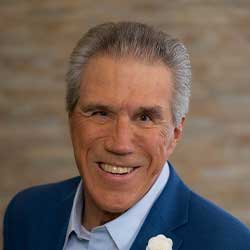 Dr. Paul Homoly, CSP Successful high-dollar case acceptance requires fresh thinking. Relying on worn-out case presentation techniques inconsistently provides the outcomes you hope for. Mastering High-Dollar Case Acceptance reveals the nuances among complex care patients that, when discovered and discussed, give patients the experience of being understood. For most patients, complex dentistry represents a significant lifestyle passage that dentists and teams must be aware of and acknowledge. For patients, complex dentistry is personal; they want it to be personal to us too. Upon completion of this presentation, participants should be able to: 1) Identify the behavioral distinctions between modest versus complex care patients. 2) Recognizing patients’ readiness for complex care. 3) Presenting complex care without overwhelming patients or losing them to sticker shock. Recorded – Apirl 17, 2024
Dr. Paul Homoly, CSP Successful high-dollar case acceptance requires fresh thinking. Relying on worn-out case presentation techniques inconsistently provides the outcomes you hope for. Mastering High-Dollar Case Acceptance reveals the nuances among complex care patients that, when discovered and discussed, give patients the experience of being understood. For most patients, complex dentistry represents a significant lifestyle passage that dentists and teams must be aware of and acknowledge. For patients, complex dentistry is personal; they want it to be personal to us too. Upon completion of this presentation, participants should be able to: 1) Identify the behavioral distinctions between modest versus complex care patients. 2) Recognizing patients’ readiness for complex care. 3) Presenting complex care without overwhelming patients or losing them to sticker shock. Recorded – Apirl 17, 2024 -
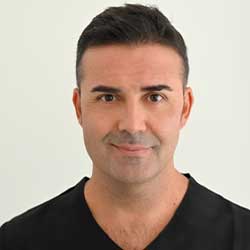 Recorded on May 13th, 2025 Description: This lecture explores the current state of occlusal management within prosthodontics, highlighting advancements in digital workflows, including the integration of intraoral scanning, computer-aided design and manufacturing (CAD/CAM), jaw tracking motion devices and virtual articulation systems. We will discuss how and when these tools enhance or do not enhance the accuracy of diagnosing occlusal relationships and the fabrication of prosthetic devices, ultimately leading to improved functional and aesthetic outcomes for patients. Furthermore, the role of digital occlusal analysis software in assessing and fine-tuning occlusal contacts for optimal performance and comfort will be addressed. This session is relevant for all clinicians who wish to enhance their knowledge in occlusion management in an increasingly digital world. Upon completion of this presentation, participants should be able to: 1) Identify the essential steps to digitalize the clinical data collection of the patient during the diagnostic phase. 2) Explain the digital procedures for aligning files that contain clinical data and the clinical procedures for executing complex prosthetic rehabilitation cases. 3) Discuss the advantages and disadvantages of the reported procedures. Luca Lepidi, DDS, MS Dr. Lepidi graduated from the University of Rome La Sapienza in 2001 (cum laude) and completed Master of Science in Oral Surgery in University of Rome, Tor Vergata. He attended the post-graduate program in Oral Implantology at the University of Chieti and in Gnatology at the University of Milano, Italy. Since then, he has worked intensively in the field of implant prosthodontics and digital dentistry. He also served as a part-time faculty member in prosthodontics, Department of Clinical and Experimental Medicine, University of Foggia Dental School, in Italy since 2011. Dr. Lepidi is Adjunct Professor at the University of Ferrara since 2022 and involved in multiple research projects in the areas of prosthodontics therapy and digital dentistry and is a senior lecturer at several University in Italy and in USA in post-graduate programs. He is an author and co-author of peer reviewed publications and serves as reviewer for multiple journals with high impact factor covering Prosthodontics and Digital Dentistry. Dr. Lepidi has indicated he has no relevant financial relationships to disclose. Relevant literature for further information: The 4D virtual patient: A proof of concept in digital dentistry Lepidi, Luca et al. The Journal of Prosthetic Dentistry, Published online April 13, 2024 Lepidi L, Suriano C, Wang HL, Granata S, Joda T, Li J. Digital fixed complete-arch rehabilitation: From virtual articulator mounting to clinical delivery. J Prosthet Dent. 2022 Mar;127(3):398-403. doi: 10.1016/j.prosdent.2020.08.049. Epub 2020 Dec 13. PMID: 33317830.
Recorded on May 13th, 2025 Description: This lecture explores the current state of occlusal management within prosthodontics, highlighting advancements in digital workflows, including the integration of intraoral scanning, computer-aided design and manufacturing (CAD/CAM), jaw tracking motion devices and virtual articulation systems. We will discuss how and when these tools enhance or do not enhance the accuracy of diagnosing occlusal relationships and the fabrication of prosthetic devices, ultimately leading to improved functional and aesthetic outcomes for patients. Furthermore, the role of digital occlusal analysis software in assessing and fine-tuning occlusal contacts for optimal performance and comfort will be addressed. This session is relevant for all clinicians who wish to enhance their knowledge in occlusion management in an increasingly digital world. Upon completion of this presentation, participants should be able to: 1) Identify the essential steps to digitalize the clinical data collection of the patient during the diagnostic phase. 2) Explain the digital procedures for aligning files that contain clinical data and the clinical procedures for executing complex prosthetic rehabilitation cases. 3) Discuss the advantages and disadvantages of the reported procedures. Luca Lepidi, DDS, MS Dr. Lepidi graduated from the University of Rome La Sapienza in 2001 (cum laude) and completed Master of Science in Oral Surgery in University of Rome, Tor Vergata. He attended the post-graduate program in Oral Implantology at the University of Chieti and in Gnatology at the University of Milano, Italy. Since then, he has worked intensively in the field of implant prosthodontics and digital dentistry. He also served as a part-time faculty member in prosthodontics, Department of Clinical and Experimental Medicine, University of Foggia Dental School, in Italy since 2011. Dr. Lepidi is Adjunct Professor at the University of Ferrara since 2022 and involved in multiple research projects in the areas of prosthodontics therapy and digital dentistry and is a senior lecturer at several University in Italy and in USA in post-graduate programs. He is an author and co-author of peer reviewed publications and serves as reviewer for multiple journals with high impact factor covering Prosthodontics and Digital Dentistry. Dr. Lepidi has indicated he has no relevant financial relationships to disclose. Relevant literature for further information: The 4D virtual patient: A proof of concept in digital dentistry Lepidi, Luca et al. The Journal of Prosthetic Dentistry, Published online April 13, 2024 Lepidi L, Suriano C, Wang HL, Granata S, Joda T, Li J. Digital fixed complete-arch rehabilitation: From virtual articulator mounting to clinical delivery. J Prosthet Dent. 2022 Mar;127(3):398-403. doi: 10.1016/j.prosdent.2020.08.049. Epub 2020 Dec 13. PMID: 33317830. -
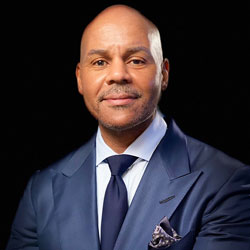 Richard Martin, DDS Collapse of the buccopalatal dimension of an extraction socket in implant dentistry is a known sequela. Multiple ridge preservation techniques to include bone and soft tissue grafting have been utilized over the years, Although these techniques can be successful, loss of buccal contour is a common finding even after 1 year in function. Ultimately this can lead the hygiene compromise and periimplantitis. Partial extraction therapy (PET) (socket shield, pontic shield and root submergence), specifically the socket shield is a technique aimed at addressing this collapse. The success of the procedure is due to intentional retention of small fragment of buccal root attached the bone. This root attachment has been shown to maintain the periodontal ligament (PDL)j and blood supply and as result the thin bundle bone. Utilization if the PET in full arch implant reconstruction has shown to be effective. Recorded - October 18, 2022
Richard Martin, DDS Collapse of the buccopalatal dimension of an extraction socket in implant dentistry is a known sequela. Multiple ridge preservation techniques to include bone and soft tissue grafting have been utilized over the years, Although these techniques can be successful, loss of buccal contour is a common finding even after 1 year in function. Ultimately this can lead the hygiene compromise and periimplantitis. Partial extraction therapy (PET) (socket shield, pontic shield and root submergence), specifically the socket shield is a technique aimed at addressing this collapse. The success of the procedure is due to intentional retention of small fragment of buccal root attached the bone. This root attachment has been shown to maintain the periodontal ligament (PDL)j and blood supply and as result the thin bundle bone. Utilization if the PET in full arch implant reconstruction has shown to be effective. Recorded - October 18, 2022 -
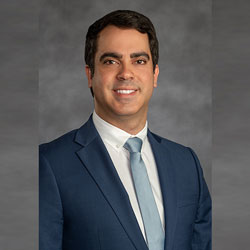 Rafael Siqueira, DDS, MS, PhD Immediate implant placement is a surgical approach that gained tremendously in popularity and patient acceptance throughout the years. One of the most desirable features of this technique is the potential in optimizing esthetic success by preserving the existing osseous and gingival architecture, with a reduced overall treatment time, invasiveness, and cost. However, unsuccessful treatments can occur if crucial biological principles are not respected. A thorough discussion concerning the bone remodeling process that occurs after tooth extraction and the 3D implant positioning in immediate implants is required. Together, these two factors will dictate the outcome of the peri implant tissue dimensions and architecture by their direct influence and interactions with other essential elements such as periodontal phenotype, loading protocol, abutment/prosthesis design, hard and soft-tissue augmentation. Recorded - April 20, 2022
Rafael Siqueira, DDS, MS, PhD Immediate implant placement is a surgical approach that gained tremendously in popularity and patient acceptance throughout the years. One of the most desirable features of this technique is the potential in optimizing esthetic success by preserving the existing osseous and gingival architecture, with a reduced overall treatment time, invasiveness, and cost. However, unsuccessful treatments can occur if crucial biological principles are not respected. A thorough discussion concerning the bone remodeling process that occurs after tooth extraction and the 3D implant positioning in immediate implants is required. Together, these two factors will dictate the outcome of the peri implant tissue dimensions and architecture by their direct influence and interactions with other essential elements such as periodontal phenotype, loading protocol, abutment/prosthesis design, hard and soft-tissue augmentation. Recorded - April 20, 2022 -
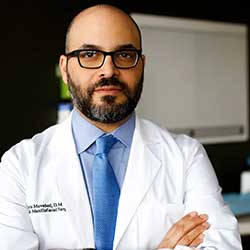 Reza Movahed, DMD Indications for application of total temporomandibular joint replacement (TJR) and maxillomandibular advancement (MMA) are multifaceted and vary from case to case, and it is imperative for the clinician to understand all the contemporary approaches and literature when considering the appropriate treatment for airway disorders, obstructive sleep apnea (OSA) , TMD, craniofacial deformities and trauma. The proper diagnosis must be supported by the necessary studies, including TMJ MRI, CBCT, polysomnography, and clinical findings. The correct option and timing of surgery is paramount to the long-term success of each case. Tailored treatment planning will be discussed in conjunction with cutting edge digital workflow to increase success and predictability of surgical and stable orthodontic outcomes. Upon completion of this presentation, participants should be able to: 1) Explain the various TMJ pathologies requiring TJR. 2) Describe when to use TJR to ensure the most stable biomechanical outcomes. 3) Recognize the available methodologies including clinical assessment, CT scan, and MRI for utilizing TJR as part of the ortho-surgical treatment. Recorded on May 1st, 2025
Reza Movahed, DMD Indications for application of total temporomandibular joint replacement (TJR) and maxillomandibular advancement (MMA) are multifaceted and vary from case to case, and it is imperative for the clinician to understand all the contemporary approaches and literature when considering the appropriate treatment for airway disorders, obstructive sleep apnea (OSA) , TMD, craniofacial deformities and trauma. The proper diagnosis must be supported by the necessary studies, including TMJ MRI, CBCT, polysomnography, and clinical findings. The correct option and timing of surgery is paramount to the long-term success of each case. Tailored treatment planning will be discussed in conjunction with cutting edge digital workflow to increase success and predictability of surgical and stable orthodontic outcomes. Upon completion of this presentation, participants should be able to: 1) Explain the various TMJ pathologies requiring TJR. 2) Describe when to use TJR to ensure the most stable biomechanical outcomes. 3) Recognize the available methodologies including clinical assessment, CT scan, and MRI for utilizing TJR as part of the ortho-surgical treatment. Recorded on May 1st, 2025 -
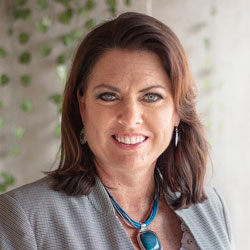 Kristie Kapp, RDH This webinar will discuss how to build a productive, profitable business without sacrificing patient and practice relationships. Dental practices which develop a culture shaped by a basic KPI's and team trust, naturally culminate in exceptional patient care, a bonded team, and a more joyous work experience. Recorded - May 3, 2022
Kristie Kapp, RDH This webinar will discuss how to build a productive, profitable business without sacrificing patient and practice relationships. Dental practices which develop a culture shaped by a basic KPI's and team trust, naturally culminate in exceptional patient care, a bonded team, and a more joyous work experience. Recorded - May 3, 2022 -
 Frauke Müller, DMD When tooth loss occurs later in life, ageing and multimorbidity impact dental treatment decisions. There is sufficient evidence to state that the mandibular implant overdenture is a well-established treatment modality, certainly in non-dependent edentulous individuals, but little is known on the very old and geriatric edentulous patients with comorbidities. They often present unfavourable anatomical conditions and effects of the multiple medications for their chronic conditions. The present webinar therefore describes the use of minimal-invasive and simple treatment concepts for elderly, edentulous patients and discusses the risks of implant placement that are related to their medical conditions. It further highlights possible complications which may arise with the onset of dependency and/or frailty and advises further simplification of the implant-restorations when needed. Recall and maintenance in this group of patients is crucial to assure the patients’ benefit from the intervention until late in life. Recorded - February 2, 2022
Frauke Müller, DMD When tooth loss occurs later in life, ageing and multimorbidity impact dental treatment decisions. There is sufficient evidence to state that the mandibular implant overdenture is a well-established treatment modality, certainly in non-dependent edentulous individuals, but little is known on the very old and geriatric edentulous patients with comorbidities. They often present unfavourable anatomical conditions and effects of the multiple medications for their chronic conditions. The present webinar therefore describes the use of minimal-invasive and simple treatment concepts for elderly, edentulous patients and discusses the risks of implant placement that are related to their medical conditions. It further highlights possible complications which may arise with the onset of dependency and/or frailty and advises further simplification of the implant-restorations when needed. Recall and maintenance in this group of patients is crucial to assure the patients’ benefit from the intervention until late in life. Recorded - February 2, 2022 -
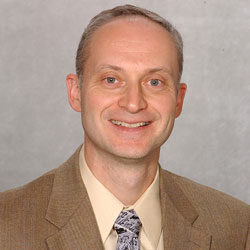 Len Tolstunov, DDS, DMD This presentation will discuss implant success and failure from the holistic approach and biologic balance that always exists between local and systemic factors. Loss of this balance and deterioration of key local factors and systemic condition will inevitably lead to a peri-implant bone loss and peri-implantitis. Surgical and some prosthetic considerations in implant failures will be discussed and clinical indices of implant success will be reviewed. Case presentations will help to review apical and marginal peri-implantitis. Inflammatory nature of peri-implantitis will be compared with non-inflammatory condition that can be classified as “peri-implantosis”. Treatment of peri-implantitis will be presented. Implant success will be defined as a dynamic process related to host’s health, as well as local factors, including bone and soft tissue quality around implant, implant design, and maintenance protocols. Finally, biologic principles of implant success at the time of implant placement and with age will be suggested. Recorded - January 19, 2022
Len Tolstunov, DDS, DMD This presentation will discuss implant success and failure from the holistic approach and biologic balance that always exists between local and systemic factors. Loss of this balance and deterioration of key local factors and systemic condition will inevitably lead to a peri-implant bone loss and peri-implantitis. Surgical and some prosthetic considerations in implant failures will be discussed and clinical indices of implant success will be reviewed. Case presentations will help to review apical and marginal peri-implantitis. Inflammatory nature of peri-implantitis will be compared with non-inflammatory condition that can be classified as “peri-implantosis”. Treatment of peri-implantitis will be presented. Implant success will be defined as a dynamic process related to host’s health, as well as local factors, including bone and soft tissue quality around implant, implant design, and maintenance protocols. Finally, biologic principles of implant success at the time of implant placement and with age will be suggested. Recorded - January 19, 2022 -
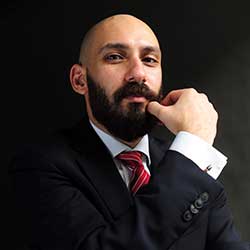 Torki, BDS, MSc In the past decade, efforts have been made to find the best treatment for immediate implant placement and with extraction sockets. Many protocols have been proposed such as ridge preservation, custom healing abutments and immediate loading. These protocols involve multiple steps and a waste of material. In this presentation, we will talk about methods to overcome these problems and minimize treatment time with digital solutions based on biology. Upon completion of this presentation, participants should be able to: 1) Describe the role of biological principles in abutment selection. 2) Explain the implant-abutment junction and its role in marginal bone stability. 3) Evaluate different methods for immediate temporization. Recorded – May 2, 2024
Torki, BDS, MSc In the past decade, efforts have been made to find the best treatment for immediate implant placement and with extraction sockets. Many protocols have been proposed such as ridge preservation, custom healing abutments and immediate loading. These protocols involve multiple steps and a waste of material. In this presentation, we will talk about methods to overcome these problems and minimize treatment time with digital solutions based on biology. Upon completion of this presentation, participants should be able to: 1) Describe the role of biological principles in abutment selection. 2) Explain the implant-abutment junction and its role in marginal bone stability. 3) Evaluate different methods for immediate temporization. Recorded – May 2, 2024 -
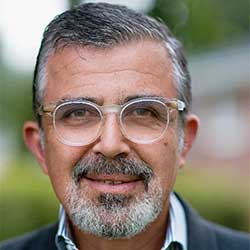 Irene Marron-Tarrazzi, DMD, MS The successful fabrication and delivery of fixed implant supported prosthesis is dependent upon a systematic interplay between the surgical and prosthetic treatment planning objectives. A paradigm shift has taken place as the Graftless surgical approach has gained credibility. Reduced treatment time, a single stage surgical reconstructions and immediate loading has resulted in a higher degree of case acceptance. Upon completion of this presentation, participants should be able to: 1) Identify the appropriate number of implants for full arch reconstructions. 2) Discuss the proper distribution of implants for full arch reconstructions. 3) Explain the use of Axial, tilted and zygoma implants for full arch maxillary reconstructions. Recorded - February 10, 2024
Irene Marron-Tarrazzi, DMD, MS The successful fabrication and delivery of fixed implant supported prosthesis is dependent upon a systematic interplay between the surgical and prosthetic treatment planning objectives. A paradigm shift has taken place as the Graftless surgical approach has gained credibility. Reduced treatment time, a single stage surgical reconstructions and immediate loading has resulted in a higher degree of case acceptance. Upon completion of this presentation, participants should be able to: 1) Identify the appropriate number of implants for full arch reconstructions. 2) Discuss the proper distribution of implants for full arch reconstructions. 3) Explain the use of Axial, tilted and zygoma implants for full arch maxillary reconstructions. Recorded - February 10, 2024 -
 Pablo Galindo-Moreno, DDS, PhD This presentation will be focused on those surgical factors that are easier and more predictable maxillary sinus floor techniques.How these factors influence the consolidation of the graft used, prevent accidents and complications of these techniques and increase the long-term survival of implants placed in this location will be addressed. The choice of biomaterial suitable for these techniques will be discussed. Recorded - December 1, 2022
Pablo Galindo-Moreno, DDS, PhD This presentation will be focused on those surgical factors that are easier and more predictable maxillary sinus floor techniques.How these factors influence the consolidation of the graft used, prevent accidents and complications of these techniques and increase the long-term survival of implants placed in this location will be addressed. The choice of biomaterial suitable for these techniques will be discussed. Recorded - December 1, 2022 -
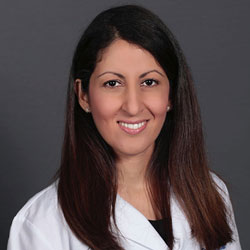 Ghadeer Thalji, DDS, PhD Success of dental implants requires the clinicians to understand the many factors that must come together to achieve long term outcomes. The lecture will explore the current scientific evidence on decisions related to the number of dental implants in various clinical scenarios of the partially and fully edentulous patients. Recorded - September 21, 2021
Ghadeer Thalji, DDS, PhD Success of dental implants requires the clinicians to understand the many factors that must come together to achieve long term outcomes. The lecture will explore the current scientific evidence on decisions related to the number of dental implants in various clinical scenarios of the partially and fully edentulous patients. Recorded - September 21, 2021 -
 Tara Aghaloo, DDS, MD, PhD Dental implants are a known and predictable treatment option for missing teeth, where most patients today desire this therapy. Although implant survival is extremely high, these favorable outcomes depend greatly on proper case selection, minimizing medical risk factors, careful surgical and prosthetic execution, and prevention and management of complications. In clinical practice, patient demands are becoming more difficult to meet, where they often seek immediate implants with immediate function. This leaves the practicing clinician with a dilemma of meeting patient expectations, but often without scientific evidence for our treatment protocols. This presentation will update the practicing dentist on achieving the most ideal and successful implant outcomes, improving case presentations, obtaining increased case selection, and avoiding and managing complications. Recorded - June 5, 2021
Tara Aghaloo, DDS, MD, PhD Dental implants are a known and predictable treatment option for missing teeth, where most patients today desire this therapy. Although implant survival is extremely high, these favorable outcomes depend greatly on proper case selection, minimizing medical risk factors, careful surgical and prosthetic execution, and prevention and management of complications. In clinical practice, patient demands are becoming more difficult to meet, where they often seek immediate implants with immediate function. This leaves the practicing clinician with a dilemma of meeting patient expectations, but often without scientific evidence for our treatment protocols. This presentation will update the practicing dentist on achieving the most ideal and successful implant outcomes, improving case presentations, obtaining increased case selection, and avoiding and managing complications. Recorded - June 5, 2021 -
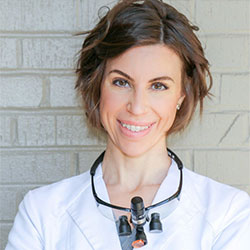 Courtney Donkoh, DDS This presentation will familiarize the audience with several types of facial growth patterns, as described in the literature by Dr. Arne Bjork. The audience will learn how to assess mandibular rotation and understand how to differentiate the various types of mandibular rotation, as described in the literature by Dr. Peter Buschang. Along the way, we will discuss interventions that influence mandibular rotation. Upon completion of this presentation, participants should be able to: 1) Describe the three types of forward mandibular rotation and two types of backward mandibular rotation. 2) Explain the difference between matrix rotation and true rotation of the mandible and describe how to assess both. 3) Identify six interventions that influence mandibular rotation. Recorded – March 19, 2024
Courtney Donkoh, DDS This presentation will familiarize the audience with several types of facial growth patterns, as described in the literature by Dr. Arne Bjork. The audience will learn how to assess mandibular rotation and understand how to differentiate the various types of mandibular rotation, as described in the literature by Dr. Peter Buschang. Along the way, we will discuss interventions that influence mandibular rotation. Upon completion of this presentation, participants should be able to: 1) Describe the three types of forward mandibular rotation and two types of backward mandibular rotation. 2) Explain the difference between matrix rotation and true rotation of the mandible and describe how to assess both. 3) Identify six interventions that influence mandibular rotation. Recorded – March 19, 2024 -
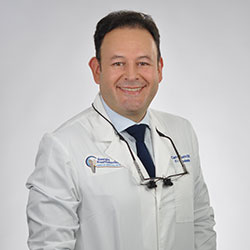 Carlos Castro, DDS This session will take a comprehensive look at the rationale for development and innovations in implant-supported denture planning and designs. Upon completion of this presentation, participants should be able to: 1) Discuss the evolution of implant-supported denture design and Its Impact on patient outcomes. 2) Explain biological considerations including osseointegration, tissue response, and long-term health. 3) Describe biomechanical perspectives: load distribution, prosthesis stability, and patient comfort Recorded – October 17, 2024
Carlos Castro, DDS This session will take a comprehensive look at the rationale for development and innovations in implant-supported denture planning and designs. Upon completion of this presentation, participants should be able to: 1) Discuss the evolution of implant-supported denture design and Its Impact on patient outcomes. 2) Explain biological considerations including osseointegration, tissue response, and long-term health. 3) Describe biomechanical perspectives: load distribution, prosthesis stability, and patient comfort Recorded – October 17, 2024 -
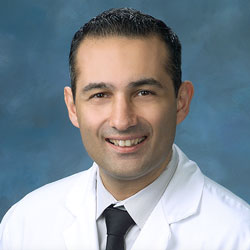 T. Cem Sayin, DDS, PhD Clinicians are confronted with difficult decisions regarding whether a tooth with pulpal and/or periapical disease should be saved through endodontic treatment or be extracted and replaced with an implant. This lecture will review the endodontic and implant literature as well as the related factors that need to be considered by the clinician affecting decision making for their patients. Recorded - February 03, 2021
T. Cem Sayin, DDS, PhD Clinicians are confronted with difficult decisions regarding whether a tooth with pulpal and/or periapical disease should be saved through endodontic treatment or be extracted and replaced with an implant. This lecture will review the endodontic and implant literature as well as the related factors that need to be considered by the clinician affecting decision making for their patients. Recorded - February 03, 2021 -
 Gustavo Mendonca, DDS, MS, PhD It is critical to position and prepare ourselves with digital workflow in mind to be prepared and up to date with current technology. Digital technology is becoming more affordable in everyday dentistry. Combination of computed tomography and 3D scanning allows more advanced and predictable planning for treatment for implant cases. These advanced tools have great applications in clinical practice. This presentation will discuss steps of digital workflow for implant treatment planning and interim and final restorations utilizing intraoral scanners, CAD/CAM software and Recorded - May 17, 2022
Gustavo Mendonca, DDS, MS, PhD It is critical to position and prepare ourselves with digital workflow in mind to be prepared and up to date with current technology. Digital technology is becoming more affordable in everyday dentistry. Combination of computed tomography and 3D scanning allows more advanced and predictable planning for treatment for implant cases. These advanced tools have great applications in clinical practice. This presentation will discuss steps of digital workflow for implant treatment planning and interim and final restorations utilizing intraoral scanners, CAD/CAM software and Recorded - May 17, 2022 -
 Joseph Fiorellini, DMD, DMSc The clinician has multiple decisions when treatment planning for a compromised dentition. The evaluation of teeth for retention or extraction can involve factors including bone volume, extent of periodontal bone loss and restorability. The balance of these factors will enhance the predictably of the implants in the compromised dentition. Recorded - January 22, 2022
Joseph Fiorellini, DMD, DMSc The clinician has multiple decisions when treatment planning for a compromised dentition. The evaluation of teeth for retention or extraction can involve factors including bone volume, extent of periodontal bone loss and restorability. The balance of these factors will enhance the predictably of the implants in the compromised dentition. Recorded - January 22, 2022 -
 Robert Lemke, DDS, MD This is an update after one-year of being in the trenches of COVID-19. What do we know now. Why we will need masks for another year and which ones to avoid. I will review immunology as it applies to COVID-19. Vaccines from history, phase studies, mechanisms, herd protection and mutations will all be reviewed. Finally an intro to being a vaccine injection center will be introduced. Recorded - March 4, 2021
Robert Lemke, DDS, MD This is an update after one-year of being in the trenches of COVID-19. What do we know now. Why we will need masks for another year and which ones to avoid. I will review immunology as it applies to COVID-19. Vaccines from history, phase studies, mechanisms, herd protection and mutations will all be reviewed. Finally an intro to being a vaccine injection center will be introduced. Recorded - March 4, 2021 -
 Serdar Yalçın, DDS, PhD This webinar will discuss the concept of digital implantology to perform successful and proper implant treatments in the aesthetic region. The use of basic concepts of implantology, especially from the planning outcome to the prosthetic outcome, will be reviewed. Upon completion of this presentation, participants should be able to: 1) Recommend optimal implant placement at the anterior region. 2) Create a Digital Implantology Workflow for immediate implantation and missing lateral incisors. 3) Describe the advantages and disadvantages of guided surgery. Recorded – June 12, 2024
Serdar Yalçın, DDS, PhD This webinar will discuss the concept of digital implantology to perform successful and proper implant treatments in the aesthetic region. The use of basic concepts of implantology, especially from the planning outcome to the prosthetic outcome, will be reviewed. Upon completion of this presentation, participants should be able to: 1) Recommend optimal implant placement at the anterior region. 2) Create a Digital Implantology Workflow for immediate implantation and missing lateral incisors. 3) Describe the advantages and disadvantages of guided surgery. Recorded – June 12, 2024 -
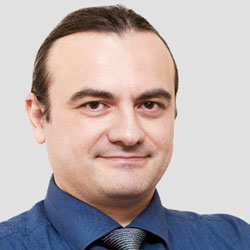 Kaan Orhan, DDS, MSc, MHM, PhD Dental implants have become part of routine treatment plans in many dental offices because of their popularity and acceptance by patients. Appropriate pre-placement planning, in which imaging plays a pivotal role, helps to ensure a satisfactory outcome. The development of precise pre-surgical imaging techniques and surgical templates allows the dentist to place these implants with relative ease and predictability. This presentation gives an overview of current practices in implant imaging for the practicing, with emphasis on selection criteria for imaging. Contemporary imaging techniques such as USG, MRI for dental implant planning, surgical phase, and also follow-up treatment will be discussed. Recorded - June 1, 2021
Kaan Orhan, DDS, MSc, MHM, PhD Dental implants have become part of routine treatment plans in many dental offices because of their popularity and acceptance by patients. Appropriate pre-placement planning, in which imaging plays a pivotal role, helps to ensure a satisfactory outcome. The development of precise pre-surgical imaging techniques and surgical templates allows the dentist to place these implants with relative ease and predictability. This presentation gives an overview of current practices in implant imaging for the practicing, with emphasis on selection criteria for imaging. Contemporary imaging techniques such as USG, MRI for dental implant planning, surgical phase, and also follow-up treatment will be discussed. Recorded - June 1, 2021

